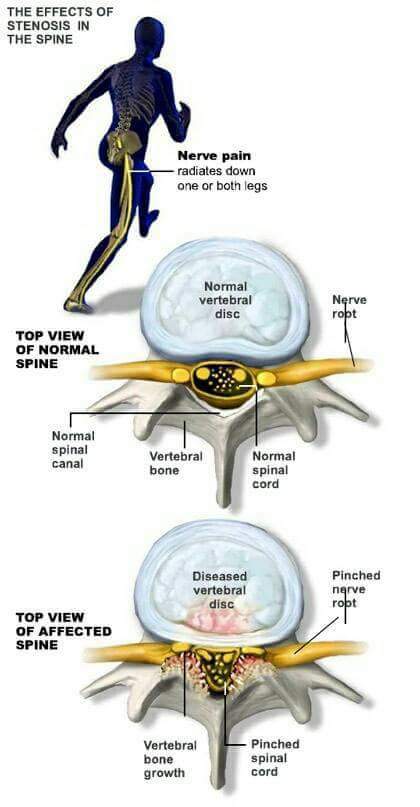What is spinal stenosis?
stenosis (or narrowing) is a common condition that occurs when the small spinal canal, which contains the nerve roots and spinal cord, becomes compressed. This causes a “pinching” of the spinal cord and/or nerve roots, which leads to pain, cramping, weakness or numbness. Depending on where the narrowing takes place, you may feel these symptoms in the lower back and legs, neck, shoulder or arms.Spinal stenosis is a narrowing of one or more areas of the spine.
This narrowing, which occurs most often in the can put pressure on the spinal cord or nerves that branch out from the squeezed areas. Typically, a person with this condition complains of severe pain in the legs, calves or lower back when standing or walking. Pain may come on more quickly when walking up or down a hill, a ramp or steps. Usually, it is relieved by sitting down or leaning over.
Spinal stenosis can be mild, moderate and severe depending on dimension of central canal.anteroposterior and transverses length.
However, not all patients with spinal narrowing or stenosis,develop symptoms - and we don’t understand why. Because of this, the term “spinal stenosis” actually dictate to the symptoms of pain and not to the narrowing itself.
What causes spinal stenosis and who does it affect?
Some people are born with a small spinal canal. This is called “congenital stenosis”. However, spinal narrowing is most often due to age-related changes that take place over time. This is called “acquired spinal stenosis.”
The risk of developing spinal stenosis increases if:
- You were born with a narrow dimensions of spinal canal [congenital]
- You are female
- You are 50 years old or older
- You’ve had a previous injury or surgery of the spine
Some medical conditions can cause spinal stenosis. These include:
- Osteoarthritis and bony spurs that form as we age
- Inflammatory (e.g., ankylosing spondylitis)
- Spinal tumors
- Spondylolisthesis
- Facet joint hypertrophy
- Protrusion of disc
- Hypertrophy ofligamentum flavour
- Angulated lamina
How is spinal stenosis treated?
Although there is no cure for spinal stenosis,medically if dimension of central canal compromise technically a regular exercise, medication and in most cases surgery can provide relief.
Exercise
Regular exercise can help you build and maintain strength in the muscles of your arms and upper legs (the hip adductors and abductors, quadriceps and hamstrings). This will improve your balance, ability to walk, bend and move about, as well as control pain. A pain physician can show you which exercises are right for you. But exercise are not definitive answer to increase canal dimension.
Medications
Over-the-counter medications such as acetaminophen (Tylenol), or nonsteroidal anti-inflammatories (commonly NSAIDS such as ibuprofen or naproxen (Aleve, Anaprox), may also relieve pain. In addition, a PAIN PHYSICIAN may prescribe other medications to help with pain and/or muscle spasm.
Cortisone injections (corticosteroid injections)
Transforaminal Injections or inter laminar directly into the area around the spinal cord (known as epidural injections) may provide a great deal of temporary and occasional permanent relief. But better then any medical treatment ,There is little objective data however to support use of cortisone injections for spinal stenosis and many studies include other causes for back pain. These injections are usually given on an outpatient basis in a hospital or clinic setting.in fluoroscopic or ultrasound guidance.but intramuscular use of steroid shot by any physician is risky with side effects.
Surgery
Some patients with severe or worsening symptoms (but who are otherwise healthy) may be candidates for a “decompression laminectomy.” This surgery removes the bony spurs and buildup of bone in the spinal canal, freeing space for the nerves and spinal cord. Afterwards, doctors often perform a spinal fusion to connect two or more vertebrae and better support for the spine.
Several recent studies have found that surgery produces better results than non-surgical treatment in the long term. However, results vary and, like all surgeries, this one also carries risks. Some of these risks include blood clots in the epidural area and/or the legs; tears in the tissue around the spinal cord; infection; and injury to the nerve root. While surgery may bring some relief, it will cure spinal stenosis or osteoarthritis and symptoms may recur
But under endoscopic assistance our results are far better then what normal surgery does.and risk association with endoscopic laminectomy are very less.so never be afraid with endoscopic assisted surgery.

